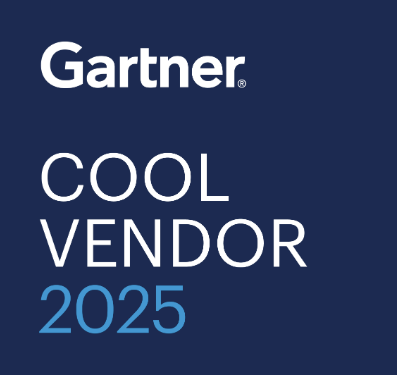Share this
Mastering Microsegmentation in the Cloud
by Charlie Treadwell on Mar 1, 2023 7:29:00 PM
In today’s rapidly evolving cybersecurity landscape, organizations are seeking effective ways to protect their data and networks from potential threats. Cloud microsegmentation has emerged as a powerful security strategy, enabling organizations to enhance their security posture within public cloud providers such as AWS, Azure, and Google Cloud. This article provides an in-depth understanding of the importance of cloud microsegmentation and offers an overview of its implementation in the leading public cloud platforms. By reading this comprehensive guide, you will gain valuable insights into the key features, best practices, and strategies for implementing microsegmentation in cloud environments, ultimately empowering you to make informed decisions to strengthen your organization’s security.
Table of contents:
- AWS, Azure, and Google Cloud: Microsegmentation in Public Clouds
- Mastering Cloud-Native Microsegmentation
- Navigating Microsegmentation in Hybrid and Multi-Cloud Environments
- Securing the Future with Cloud Microsegmentation
- Key Takeaways for a Secure Cloud Future
Importance of Cloud Microsegmentation
Cloud microsegmentation plays a vital role in safeguarding an organization’s assets in public cloud environments by dividing the network into smaller, more granular segments, each with its own set of security controls. This approach helps limit the attack surface, improves compliance with industry regulations, and provides a more robust and flexible security posture. With the growing adoption of cloud-based services, the need for effective cloud microsegmentation strategies has become more critical than ever.
Overview of Public Cloud Providers: AWS, Azure, and Google Cloud
The leading public cloud providers, AWS, Azure, and Google Cloud, offer various features and tools to facilitate microsegmentation. Each platform has its own unique approach to implementing and managing microsegmentation, making it essential for organizations to understand the nuances of each provider. In the following sections, we will explore the specifics of AWS, Azure, and Google Cloud microsegmentation, highlighting the key features, best practices, and security considerations for each platform.
AWS, Azure, and Google Cloud: Microsegmentation in Public Clouds
Implementing Microsegmentation in AWS
AWS Microsegmentation: Features and Tools
Amazon Web Services (AWS) provides a suite of features and tools to help organizations implement microsegmentation effectively. Key among these are Security Groups, Network Access Control Lists (NACLs), and AWS Firewall Manager. Security Groups act as virtual firewalls for your instances, allowing you to define inbound and outbound traffic rules. NACLs provide an additional layer of security by controlling the flow of traffic between subnets within a Virtual Private Cloud (VPC). AWS Firewall Manager centralizes the management of security policies across multiple accounts and regions, making it easier to implement consistent security rules.
AWS Microsegmentation Security Best Practices
To ensure optimal security in AWS, follow these best practices for microsegmentation:
- Implement the principle of least privilege by allowing only the necessary traffic between segments.
- Use Security Groups and NACLs together to create multiple layers of defense.
- Regularly review and update your security rules to maintain a strong security posture.
- Utilize AWS Firewall Manager for centralized management of security policies.
Enhancing Security with Azure Microsegmentation
Azure Microsegmentation: Features and Tools
Microsoft Azure offers several features and tools to support microsegmentation, including Azure Virtual Network, Network Security Groups (NSGs), and Azure Firewall. Azure Virtual Network allows you to segment your network into multiple subnets, while NSGs act as virtual firewalls for your resources, controlling inbound and outbound traffic. Azure Firewall is a managed, cloud-based network security service that provides advanced threat protection and centralized policy management.
Azure Microsegmentation Security Best Practices
Follow these best practices to ensure a secure microsegmentation implementation in Azure:
- Segment your network into multiple subnets using Azure Virtual Network.
- Apply the principle of least privilege by allowing only necessary traffic between segments.
- Use NSGs to define granular traffic rules and create multiple layers of defense.
- Leverage Azure Firewall for advanced threat protection and centralized policy management.
Google Cloud Microsegmentation for Robust Security
Google Cloud Microsegmentation: Features and Tools
Google Cloud Platform (GCP) offers a range of features and tools to support microsegmentation, such as Virtual Private Cloud (VPC) networks, Firewall Rules, and Google Cloud Armor. VPC networks enable you to divide your network into multiple subnets, while Firewall Rules control the flow of traffic between these subnets. Google Cloud Armor is a managed security service that provides Distributed Denial of Service (DDoS) protection and policy management.
Google Cloud Security Best Practices
To ensure a secure microsegmentation implementation in GCP, follow these best practices:
- Use VPC networks to segment your network into multiple subnets.
- Apply the principle of least privilege by allowing only necessary traffic between segments.
- Define granular traffic rules using Firewall Rules and create multiple layers of defense.
- Employ Google Cloud Armor for DDoS protection and centralized policy management.
Mastering Cloud-Native Microsegmentation
Grasping Cloud-Native Microsegmentation Concepts
Cloud-native microsegmentation is the process of dividing a network within cloud environments into smaller, isolated segments for enhanced security and control. By leveraging the cloud’s inherent flexibility and scalability, organizations can create granular security policies and reduce the attack surface.
Crafting a Cloud-Native Microsegmentation Strategy
A well-designed cloud-native microsegmentation strategy should involve the following steps:
- Identify and categorize your assets, including applications, data, and services.
- Define the communication flows and dependencies between these assets.
- Create security zones based on the identified assets and their interactions.
- Establish policies and rules to enforce the desired level of access control and isolation between segments.
Implementing Cloud-Native Tools and Processes
Several cloud-native tools and processes can be used to implement microsegmentation, including container orchestration platforms, service meshes, and policy enforcement tools. These tools help automate the deployment, management, and enforcement of microsegmentation rules within cloud-native environments.
Monitoring and Adjusting Cloud Microsegmentation
Continuous monitoring and adjustment of your cloud microsegmentation strategy is crucial to maintaining a strong security posture. Regularly review and update your security policies, monitor network traffic for anomalies, and leverage cloud-native monitoring tools to gain insights into the effectiveness of your microsegmentation implementation.
Navigating Microsegmentation in Hybrid and Multi-Cloud Environments
Addressing Hybrid and Multi-Cloud Microsegmentation Challenges
Microsegmentation in hybrid and multi-cloud environments introduces complexities due to the diverse nature of these architectures. Challenges include ensuring consistent security policies across platforms, managing the increased complexity of multiple providers, and maintaining visibility into network traffic and communications.
Embracing Best Practices for Hybrid and Multi-Cloud Microsegmentation
To overcome the challenges of microsegmentation in hybrid and multi-cloud environments, follow these best practices:
- Establish a unified security policy framework to maintain consistency across all cloud environments.
- Leverage a centralized management platform for monitoring and managing microsegmentation policies.
- Use automation and orchestration tools to streamline policy enforcement and reduce manual effort.
- Regularly review and update security policies to adapt to changes in your hybrid and multi-cloud infrastructure.
Utilizing Tools and Services for Multi-Cloud Microsegmentation Management
Several tools and services are available to help manage microsegmentation across multiple cloud platforms. These may include cloud-native security services provided by cloud providers, third-party security solutions, and multi-cloud management platforms. By leveraging these tools, organizations can maintain consistent security policies, gain better visibility into network traffic, and streamline the management of microsegmentation across hybrid and multi-cloud environments.
Securing the Future with Cloud Microsegmentation
Emphasizing the Relevance of Cloud Microsegmentation
In today’s rapidly evolving cybersecurity landscape, cloud microsegmentation has emerged as a critical component of modern security strategies. By breaking down network boundaries and creating granular security policies, organizations can effectively minimize their attack surface and strengthen their overall security posture.
Reaping the Rewards of Public Cloud Microsegmentation
Implementing microsegmentation in public cloud environments such as AWS, Azure, and Google Cloud brings numerous benefits, including improved security, compliance, and increased visibility. Each cloud provider offers its unique set of tools and features, making it essential for organizations to understand the specific capabilities of each platform to maximize their security efforts.
Championing Cloud-Native Microsegmentation Strategies
The adoption of cloud-native microsegmentation strategies and best practices is paramount to secure modern, cloud-based infrastructures. By understanding the core concepts of cloud-native microsegmentation, designing effective strategies, implementing the right tools, and continuously monitoring and adjusting the policies, organizations can stay ahead of emerging threats and maintain a robust security posture.
Safeguarding Hybrid and Multi-Cloud Environments
Microsegmentation plays a vital role in securing hybrid and multi-cloud environments, which present unique challenges due to their complex architectures. By addressing these challenges, embracing best practices, and leveraging the right tools and services, organizations can ensure consistent security policies and maintain a strong defense against potential attacks.
Key Takeaways for a Secure Cloud Future
- Recognize the importance of cloud microsegmentation in modern cybersecurity strategies.
- Understand the benefits and features of AWS, Azure, and Google Cloud microsegmentation.
- Adopt cloud-native microsegmentation strategies and best practices for enhanced security.
- Implement microsegmentation in hybrid and multi-cloud environments to maintain consistent security policies.
With the increasing reliance on cloud-based infrastructures, the role of cloud microsegmentation has never been more critical. By understanding and implementing best practices and leveraging the right tools, organizations can create a more secure environment, reducing the risk of security breaches and data loss in an ever-changing threat landscape.
Helpful resources related to cloud microsegmentation:
- Best Practices for Security, Identity, & Compliance: Learn how to meet your security and compliance goals using AWS infrastructure and services.
- Azure Network Security Best Practices: This guide provides an in-depth understanding of Azure network security and includes best practices for implementing microsegmentation.
- Google Cloud Security Best Practices: This resource offers an extensive look at Google Cloud security best practices and covers various aspects of cloud security.
- The NIST Cybersecurity Framework: The National Institute of Standards and Technology (NIST) provides a framework for managing and reducing cybersecurity risk, which is applicable to organizations using cloud services.
- Cloud Security Alliance (CSA): The CSA is a non-profit organization that promotes best practices for providing security assurance within cloud computing and offers various resources to help organizations secure their cloud environments.
Share this
- Enterprise Cybersecurity (52)
- Zero Trust (21)
- Microsegmentation (13)
- Elisity (7)
- Enterprise Architecture Security (7)
- Lateral Movement (7)
- Identity (5)
- Network Security (5)
- Ransomware (5)
- Remote Access (4)
- Elisity Release (3)
- Cyber Resilience (2)
- Identity and Access Management (2)
- Cybersecurity Healthcare (1)
- Forrester (1)
- Information Security (1)
- MITRE (1)
- December 2025 (1)
- November 2025 (3)
- October 2025 (5)
- September 2025 (4)
- August 2025 (5)
- July 2025 (5)
- June 2025 (5)
- May 2025 (4)
- April 2025 (5)
- March 2025 (6)
- February 2025 (3)
- January 2025 (5)
- December 2024 (4)
- November 2024 (5)
- October 2024 (7)
- September 2024 (5)
- August 2024 (3)
- July 2024 (4)
- June 2024 (2)
- April 2024 (3)
- March 2024 (2)
- February 2024 (1)
- January 2024 (3)
- December 2023 (1)
- November 2023 (1)
- October 2023 (2)
- September 2023 (3)
- June 2023 (1)
- May 2023 (3)
- April 2023 (1)
- March 2023 (6)
- February 2023 (4)
- January 2023 (3)
- December 2022 (8)
- November 2022 (3)
- October 2022 (1)
- July 2022 (1)
- May 2022 (1)
- February 2022 (1)
- November 2021 (1)
- August 2021 (1)
- May 2021 (2)
- April 2021 (2)
- March 2021 (3)
- February 2021 (1)
- November 2020 (2)
- October 2020 (1)
- September 2020 (1)
- August 2020 (3)




No Comments Yet
Let us know what you think